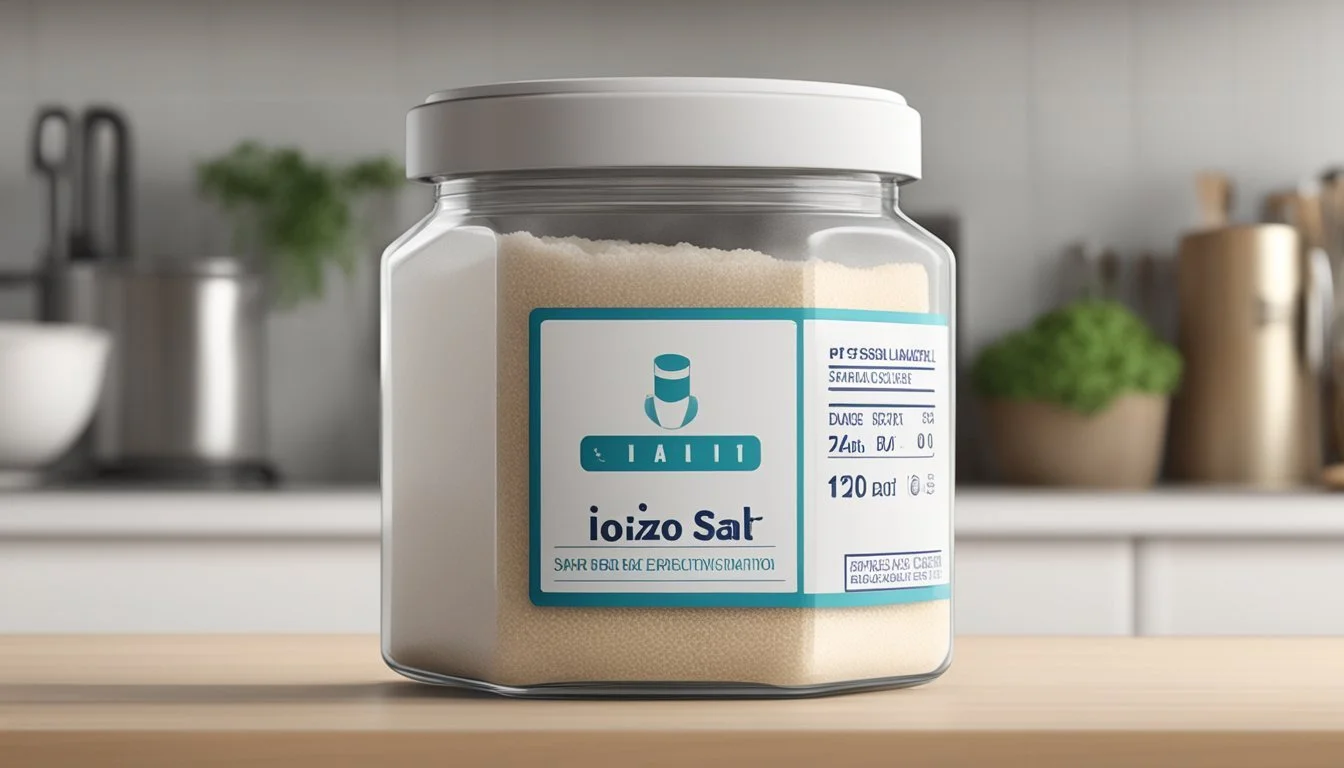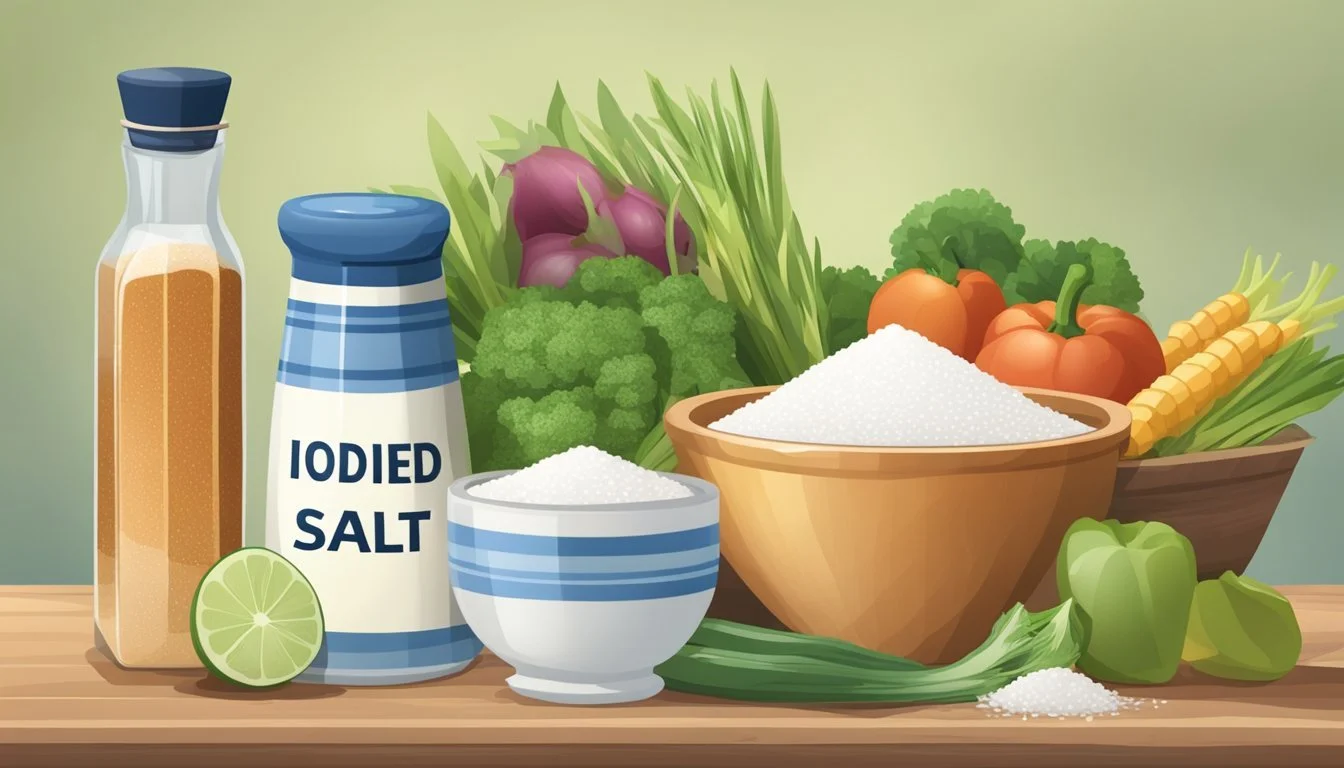How Long Does Iodized Salt Last?
Shelf Life and Storage Insights
Iodized salt (how long does iodized salt last?) is a staple in many households and diets, serving not just as a seasoning agent, but also as a crucial source of dietary iodine. This essential micronutrient plays a significant role in thyroid health, and since it's not always available in sufficient quantities in people's diets, iodine is added to salt to help prevent deficiencies. While regular non-iodized salt can last indefinitely without losing its flavor or potency, iodized salt has a more limited shelf life because the added iodine slowly dissipates over time.
The stability of iodized salt is influenced by storage conditions. When stored properly in a cool, dry place, away from moisture and metal ions that can accelerate the degradation process, iodized salt has a shelf life of around five years. It's important to note that while the salt itself does not go bad in the traditional sense, the reduction in iodine content over time can diminish its nutritional value, making the consumption of older iodized salt less beneficial for those specifically seeking its iodine content for dietary purposes.
Understanding the shelf life of iodized salt is important for maintaining its intended nutritional benefits. Consumers can confidently use iodized salt within this timeframe, ensuring they are optimally seasoning their food while also contributing to their necessary intake of iodine. Despite the reduced iodine levels, the salt remains safe for consumption long past the five-year mark, even if the primary purpose of iodine fortification is no longer fully served.
Understanding Iodized Salt
Iodized salt, commonly known as table salt, is a staple in diets around the world. Its primary component is sodium chloride, which is essential for human health. Iodine, an indispensable trace mineral often added to table salt, is vital for proper thyroid function.
Composition:
Salt (Sodium Chloride): The base of iodized salt.
Iodine: Added to prevent iodine deficiency.
Anti-caking agents: Often included to prevent clumping.
Types of Salt:
Pure Salt: Often sea or rock salt with no additives.
Table Salt: Often iodized for dietary supplementation.
Kosher Salt: Coarser grain, usually without iodine.
Sea Salt: Retains trace minerals, iodine may be naturally occurring or added.
Iodine Addition: Manufacturers typically use potassium iodate to iodize salt. This enriches the salt with iodine to safeguard against deficiencies, which can lead to health issues like goiter.
Iodine Content: The exact amount of iodine in iodized salt can diminish over time, especially if exposed to air and moisture. Proper storage in a cool, dry place is recommended to maintain its stability.
Shelf Life: Iodized salt does not spoil, but its iodine content is best preserved when storage conditions are optimal. The suggested shelf life to ensure adequate iodine levels is around five years.
Manufacturers create iodized salt to cater to dietary needs, ensuring adequate iodine intake for proper health. Its presence in the kitchen provides a convenient way to consume this crucial mineral.
Importance of Iodine
Iodine is a crucial nutrient for thyroid function and overall health, impacting various aspects of physiology and dietary habits. Its role extends from daily nutrition to specific medical applications and public health initiatives.
Dietary Significance
Iodine plays an essential role in maintaining thyroid health by contributing to the synthesis of thyroid hormones, which are critical for regulating metabolism. A diet lacking in iodine can lead to a condition known as goiter, an enlargement of the thyroid gland.
Iodine in Medicine
In medicine, iodine is used in various forms such as iodine pills or radioactive iodine. These are employed for diagnostic procedures or treatments, especially concerning thyroid gland issues.
Benefits for Development
Iodine is vital for brain development in infants and fetal growth during pregnancy. Adequate iodine intake is necessary to ensure the proper production of hormones that are critical for developmental processes.
Iodine and Diet Trends
With evolving nutrition trends, iodine intake is impacted by shifts towards or away from foods like dairy, seafood, and processed grains, which can be significant sources of this nutrient.
Public Health Perspective
Public health policies promote iodized salt to prevent iodine deficiency in populations, as reliable iodine sources such as dairy and seafood might not be universally accessible.
Safety Profile
Iodized salt is generally considered safe to use and consume, and it is a practical method to deliver necessary iodine to protect against deficiency.
Correlation with Blood Pressure
While iodine itself does not directly affect blood pressure, its delivery vehicle, iodized salt, when used in moderation, contributes to iodine intake without excessively raising sodium levels.
Culinary Uses
Iodized salt is used in seasoning food, as well as in canning, baking, and pickling, where its properties help to preserve and flavor a wide range of dishes.
Environmental Factors
Exposure to water, moisture, or high humidity can affect the quality of iodized salt. Storage in a cool, dry place, away from direct sunlight, is recommended to preserve its quality.
Shelf Life and Storage
Iodized salt, when stored properly, has an indefinite shelf life. Keeping it in an airtight container in a dry, cool, dark place minimizes the risk of clumping or deterioration.
Identification of Quality
Quality iodized salt should be free-flowing, without clumps or visible impurities. The presence of anti-caking agents in the salt helps maintain its texture and appearance.
Understanding Expiration Labels
Iodized salt packaging often includes an expiration date or a best by date, not because the salt will go bad but to indicate peak quality. Under proper storage, iodized salt maintains its effectiveness.
Usage in Food Processing
Food manufacturers frequently use iodized salt in the production of meat and dairy products, adding nutritional value while enhancing flavor.
Replacement and Alternatives
Alternatives to iodized salt include sea salt and kosher salt. However, they may not provide the same iodine content, so supplementing with other iodine-rich foods or using iodized salt in moderation is advisable.
Handling and Safety Measures
Safe handling of iodized salt involves keeping it away from moisture and water sources, as these can lead to clumping and deteriorate the salt's quality.
Potential Risks and Misconceptions
Misconceptions about iodized salt can lead to its underuse, potentially increasing the risk for iodine deficiency disorders such as goiter and impaired thyroid function.
Conclusion
Iodized salt offers a simple, effective means of ensuring adequate iodine intake. While alternatives exist, none match the combination of utility, safety, and accessibility provided by iodized salt.




